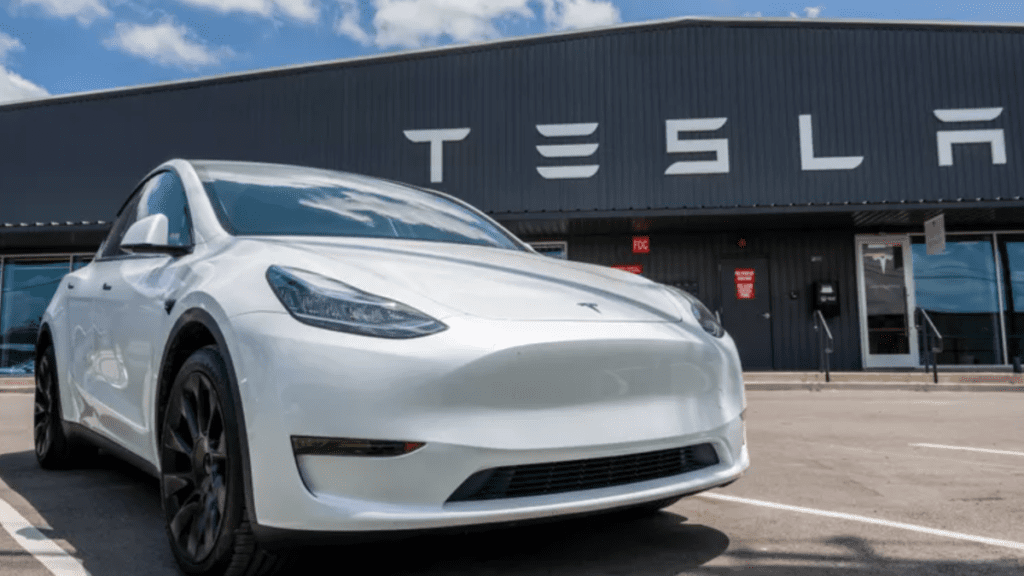Tesla Buyers Are Remarkably Loyal To The Brand

It may come as no surprise to you that Tesla buyers are incredibly loyal to the brand. An impressive 72.8 percent of Model 3 buyers, for instance, are buying another Tesla after or in addition to their Model 3. That’s a higher percentage of brand retention than pretty much any other brand on the market. Model S buyers are 59.9 percent loyal to the brand, while Model X and Model Y buyers are less loyal because the brand doesn’t really have anywhere for them to migrate to.
The Hype Behind Tesla Stock Success In 2023
“Tesla is very successful at migrating customers from a Model 3 to a Model Y, which contributes to high loyalty rates,” said Kent Chiu, associate director of consulting services at S&P Global Mobility. “Tesla has taken advantage of the industry’s shift toward CUVs. By putting the Model 3 to market first, followed by the Model Y shortly after, it gave customers a path to migrate through the portfolio.”
When someone has returned to the new car buying market after owning a Tesla Model 3, they tend to either migrate to the Model Y compact crossover (40.3 percent), or get another Model 3 (26.1 pecent). The Model Y, meanwhile, has the highest model loyalty rate on the market at 37.3 percent. The vast majority of Tesla buyers (78.9 pecent) were convinced enough by Tesla to continue buying battery electric vehicles.
Since the beginning of the automotive market, companies have introduced new models to create a general flow of incoming customers to returning customers. For example, a Metro buyer would graduate to a Cavalier, then on up the Chevrolet lineup through Monte Carlo and Malibu, maybe with a sideways move to a Venture or a Tahoe if they had kids or bought a boat. With luck they’d move up to a Buick, Oldsmobile, or Cadillac as they aged and prospered.
Tesla doesn’t really have this progression, and the price gap between a Model 3 and a Model S or X is too large for many to justify the jump. Customers looking for something bigger are defecting to Rivian, which has stepped in to fill the market that hasn’t yet been filled by Tesla’s long-delayed Cybertruck.
A company like Mercedes-Benz, for example, already offers more electric size variety than Tesla with two sizes of sedan and three sizes of crossover. In their fossil-fueled lineups, however, Mercedes also has nine further crossovers and SUVs plus four sizes of sedan, four coupes, and three convertibles. Customers are begging for additional variety from Tesla, which has promised three new models for years and thus far failed to deliver.
The most popular non-Tesla for those replacing a Model 3 or Model Y is the Illinois-brand’s R1T pickup, holding at 1.3 percent and 2.1 percent, respectively. Tesla introduced the R1T’s ostensible competitor Cybertruck at an event in 2019, and it was originally quoted to be ready for sale in 2021. The Cybertruck delivery event is currently said to be “upcoming” but knowing company CEO Elon Musk and his propensity to exaggerate time, that could mean a handful of weeks from now or next year.
Against the traditional model flow, many Model S buyers are actually stepping down to a Model 3 (7.9 percent) or Model Y (18.6 percent) as they provide much of the same experience for far less money. 21.7 percent of Model S buyers are just continuing on with a newer Model S, while 11.7 percent are going into a Model X crossover. As vehicles age in a lineup, the loyalty rates decline, even with small peaks for model facelifts or significant refreshes. The Model S has been on the market since 2012, and it’s getting a bit long in the tooth, despite many new revisions of the mechanical and operational systems.



